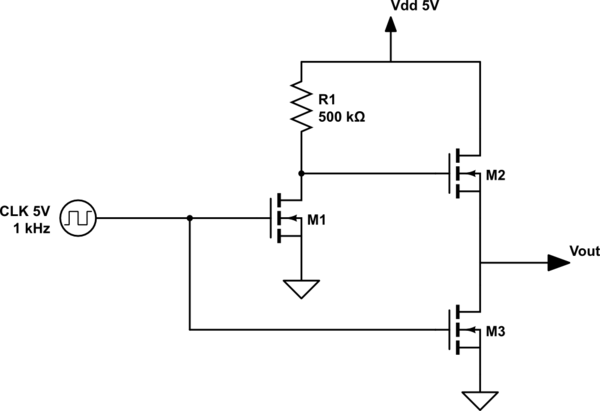what kinda aspects should I concern about?
One thing you should be concerned about is "shoot-through". Shoot-through occurs when two stacked transistors, such as those in your circuit, are both conducting, forming a low impedance path between the power supply rails. Since this is a low impedance path, significant currents may flow during shoot-through.
Although integrated circuits may have mosfet's "stacked" as you have done, the designers of those circuits either ensure, or require the user to ensure, that the transistors are never never both on simultaneously, or, if that can't be guaranteed, that the overlap when both transistors are conducting simultaneously is relatively short.
One way to ensure that only one MOSFET is conducting at a time, or if both are conducting, it is only for a brief moment, is to use complementary MOSFETs with a threshold voltage that is more than half of the supply voltage, and tie the gates together. The use of complimentary MOSFETs simplifies driving the gate of the upper transistor.
The output stage of your buffer could then look like this.

simulate this circuit – Schematic created using CircuitLab
With such a design, the supply voltage and the MOSFETs' threshold voltages MUST be designed to be compatible. Shoot-through could easily destroy the transistors.
Remember, this circuit is the output stage of your buffer only. Stand-alone, it is a logical inverter.
An alternative approach, that works for MOSFETs with "low" threshold voltages is to include 1 or 2 resistors between the MOSFETs in your output stage, perhaps like this:

simulate this circuit
This circuit is also a logical inverter made from discrete MOSFETs.
The resistors R1 and R2 reduce shoot-through current to what may or may not be reasonable levels for your application. Increasing their value will reduce shoot-through current, but will also reduce the current available for output (i.e. increase the output impedance). Conversely, decreasing their value will reduce the output impedance, but will increase the shoot-through.
The input/output characteristics of this circuit may look something like this if the MOSFET threshold voltages are low:

If the resistors have equal values, then when both transistors are equally "on", the output will be about half of Vdd. This can be modified by changing the values of those resistors. [One resistor may be omitted entirely]. Changing the resistor ratio will affect the ratio of sink to source current for high and low outputs.




